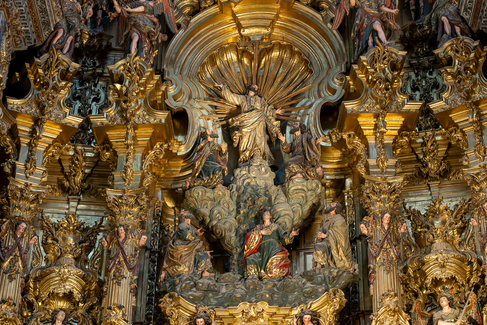Sevilla's Sacred Sites: October 29 - November 1, 2023
- Cecilia Clark

- Dec 11, 2023
- 2 min read
Updated: Aug 30
Saying that there are a lot of sacred sites in Sevilla is very much an understatement. We stopped in at two of the most famous religious sites.
We visted the Divine Saviour Collegiate Church which also has an audio guide. Anybody who was anyone visited Seville way before we got there. First the Romans and Visigoths followed in the 9th century by the Moors who built Aljama of Ibn Adabba mosque on this site around 829. With the conquest of Seville by King Saint Ferdinand in 1248, the mosque was transformed and Christianized. The remodeled mosque was torn down in 1661 and replaced with a Christian temple which collapsed in 1679. The structure which now stands dates back to the 3-nave replacement built in 1712.
The church is exquisite with its Spanish Baroque interior and beautifully carved altarpieces from the 17th and 18th centuries.
We also visited the massive Cathedral de Seville. We had a private guide because that was the only way we could see it. We didn't realize that you must get tickets about a week in advance and by the time we looked at the website, everything was sold out. The private guide was informative, but kept us moving along. The cathedral, the largest Gothic Cathedral in the world, is cavernous. The cathedral has a similar history of who has occupied this site: Romans, Visigoths, Moors, and Christians.
The feature that caught my attention is the Last Supper in the main Life of Christ Altarpiece. The huge altarpiece is exquisite, but so large that you really need a long lens or binoculars to see the vignettes well. Our guide said there is a 2 foot/.61 meter disparity in the size of the figures at the bottom from those at the top (2 feet/.61 meters larger) of the Altarpiece so everything is visually in proportion when it is viewed from the cathedral floor.
Sevilla Cathedral is built on the ashes of a Grand Mosque built by the Moors. The Mosque was completed in 1176, and the minaret made of local bricks and recycled marble (perhaps from a Roman temple) was finished in 1198. Sevilla was recovered by the Christians in 1248 and the mosque became a Cathedral and the minaret a bell tower finished in 1506. The minaret/bell tower is known as La Giralda. La Giralda stands 104 meters/343 feet tall and has been registered as a World Heritage Site by UNESCO. La Giralda has been modified and built a litle higher in the 800 years of its existence. Its Moorish foundation remains strong.





































Comments